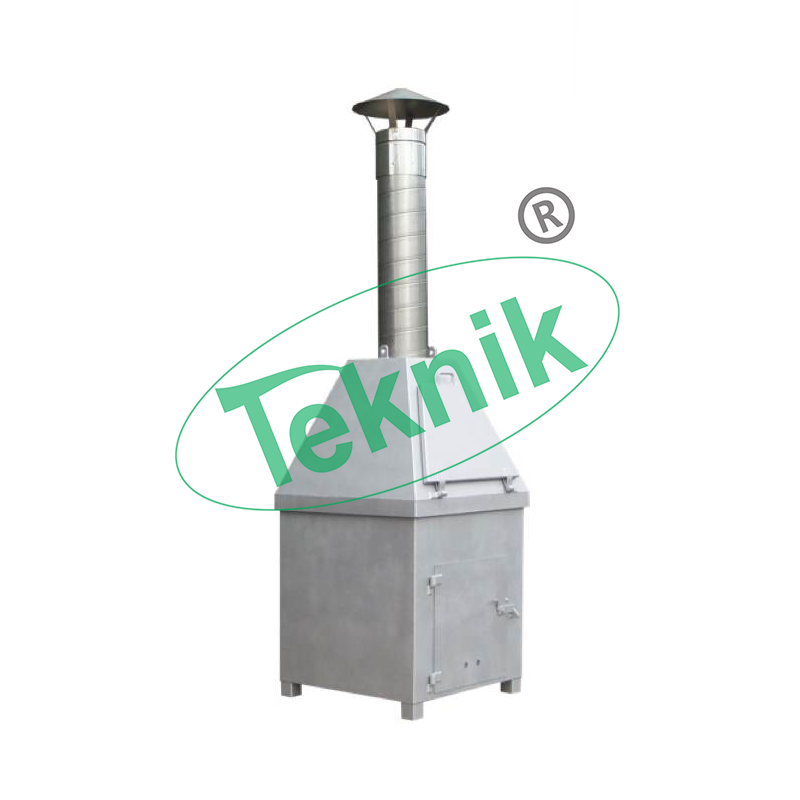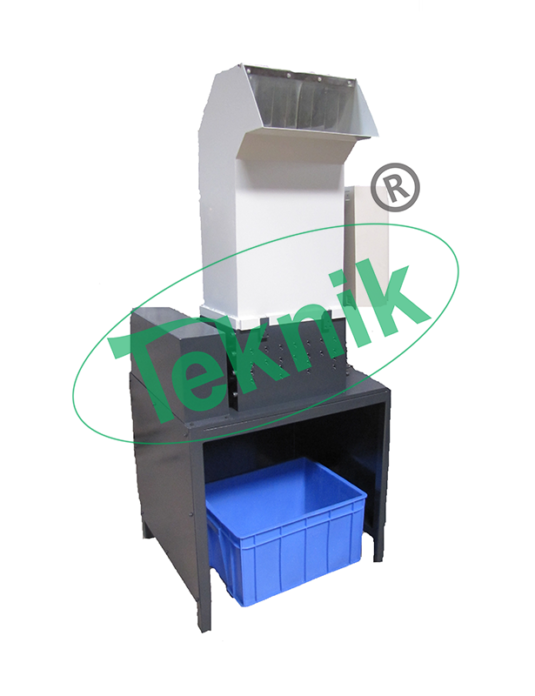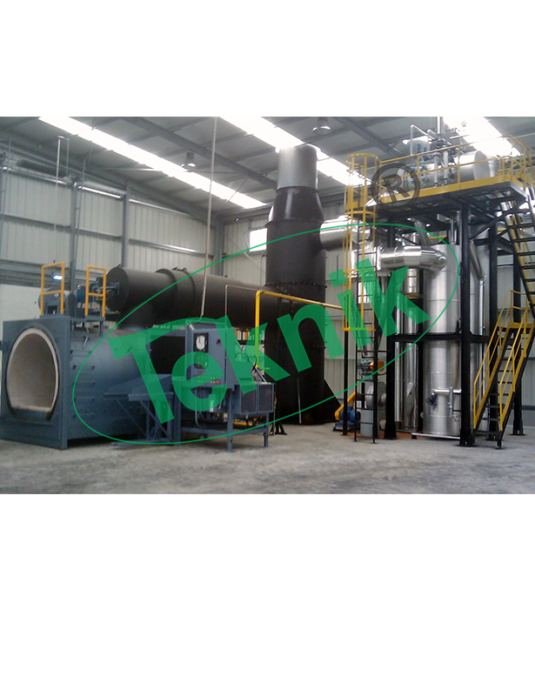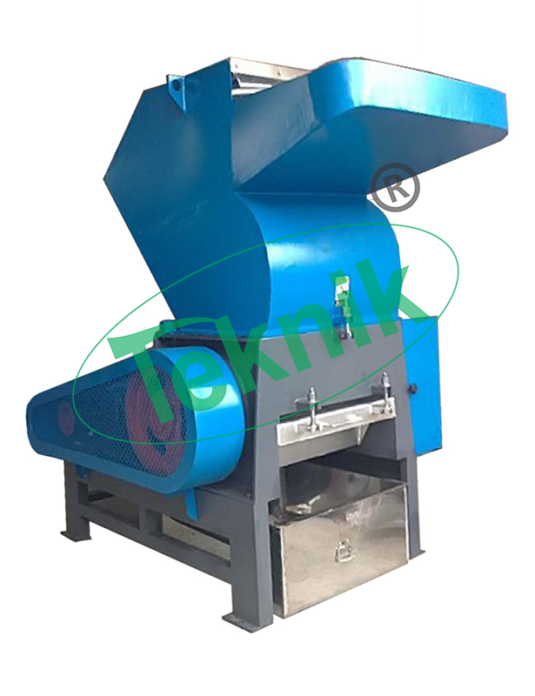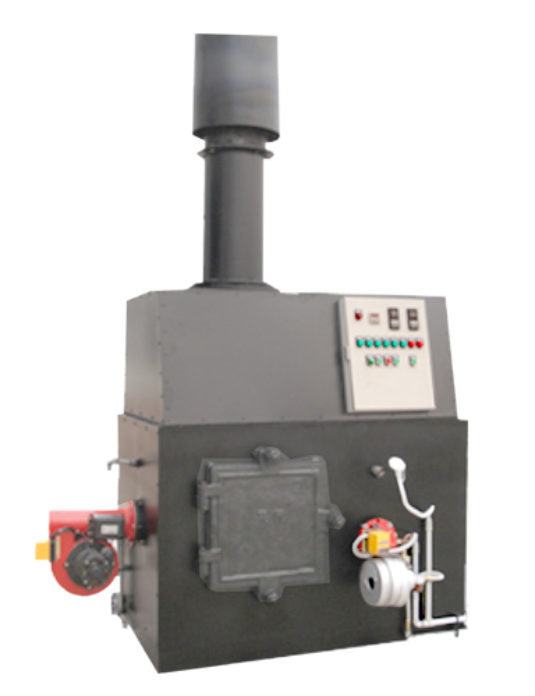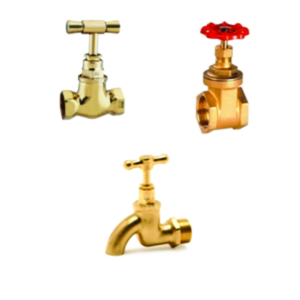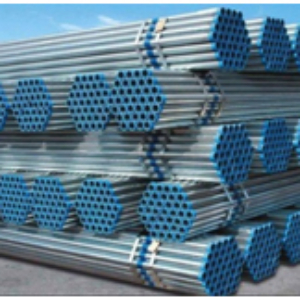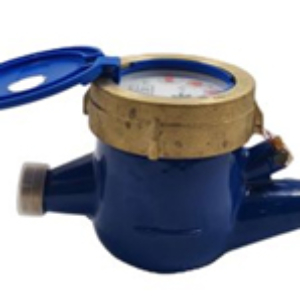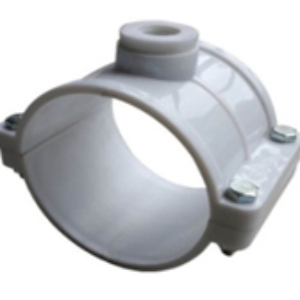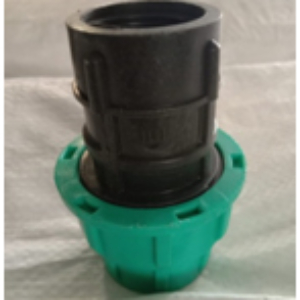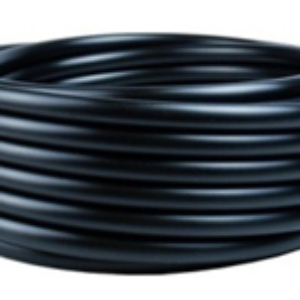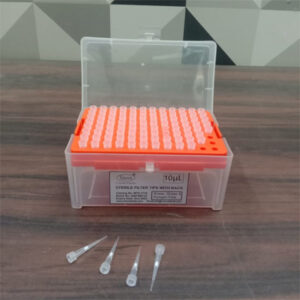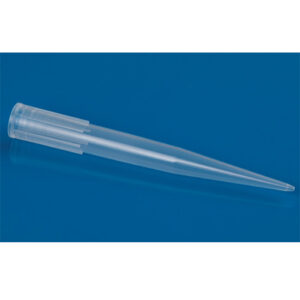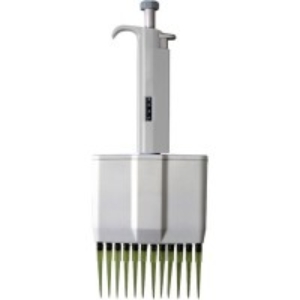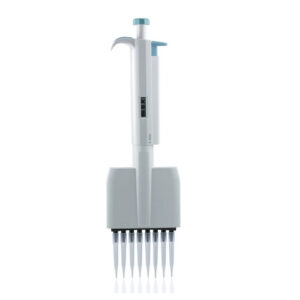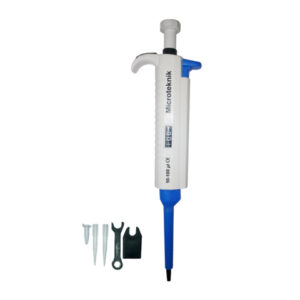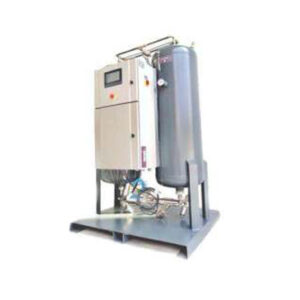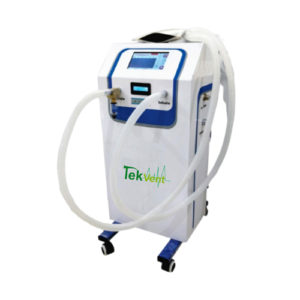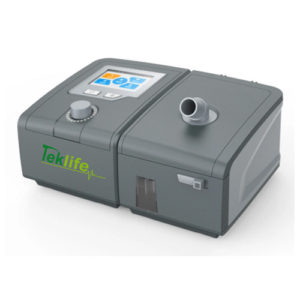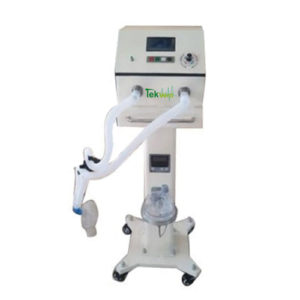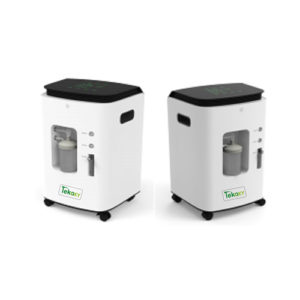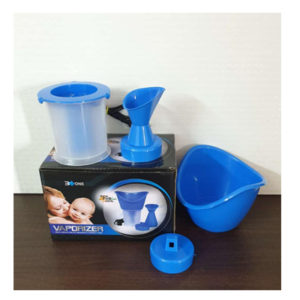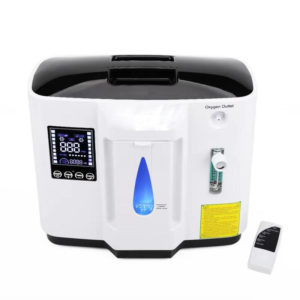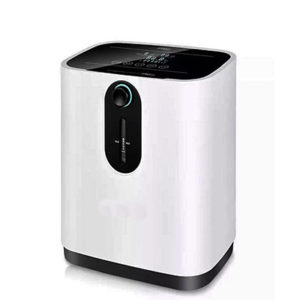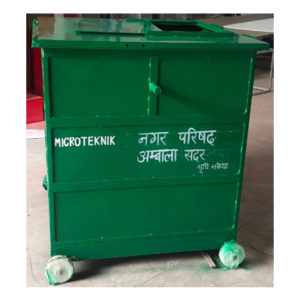Description
Kitchen waste incinerator to incinerates food scrap items such as vegetable and fruit waste, meal leftovers, coffee grounds, tea bags, stale bread, grains, and general refrigerator spoilage are an everyday occurrence in most hotels, restaurants, households etc. Their innovative design provides fast, efficient free burning of waste. The waste is loaded and ignited manually through the top loading door. The flames are fed with primary air from the holes in the cleaning door which flows up through the grill floor and the air intake cone. Once burning has started, secondary air is drawn from the underside of the hood, which causes intense secondary combustion for the efficient destruction of the smoke and gases, making the incinerators virtually smoke free.
The kitchen waste incinerator reduces the original bulk by 99% into a light, sterile ash which falls through the grill floor into the ash collection pit. The ash only needs to be removed when it builds up and not after every burn. When the first load has burned down, more waste can be added.
Secondary Combustion: The innovative waste incinerator design ensures secondary combustion in the tapered hood. This burns the smoke and gases so the incinerator is virtually smoke free. You can also Read here About – Sanitary Napkin Disposal
Easy to clean ash: The bottom door gives you easy access to clean out the ash. Ash only needs to be removed periodically since the original material burns down to only 1% of its original volume.
Rugged Construction: The incinerator is made from heavy duty steel, giving many years to trouble free use. Since it has no moving parts there is nothing to go wrong!
Kitchen Waste Incinerator: Waste permitted to incinerate
- Solid Waste:
- Domestic Waste: All types of food waste, sewage and waste generated in the living spaces.
- Disposal Plastics: Packaging, ship construction, utensils and cups, bags, sheeting, floats, fishing nets, strapping bands, rope and lines.
- Cargo-associated waste: Dunnage, shoring pallets, lining and packing materials, plywood, paper, cardboard.
- Liquid Waste:
- Sludge Oil: Sludge from fuel and lubricating oil separators.
- Waste Oil: Waste lubricating oil from:
- Bilge water separators
- Drip trays, etc.
- Cooking oil
- Prohibited to Incinerate:
- Polychlorinated biphenyls
- Garbage containing more than traces of heavy metal
- Refined petroleum products containing halogen compounds
- Exhaust gas cleaning system residues
- Fresh fish
ADVICE: Do not incinerate:
- Metals like soda and food cans, plates, flatware, serving spoons/trays, hardware (nuts & bolts), structural pieces, wire ropes, chains, etc.
- Glass, such as bottles, jars, drinking glasses, etc.
- Flammable materials such as bottles or cans containing flammable liquids or gasses and aerosol cans.
- Heavy loads with plastics or bulk food waste.
- Loading of glass will result in a rock hard slag which is difficult to remove from and may damage the refractory lining.
** Note:-The content of the product and specification are subject to change without prior notice for continuous improvement.



